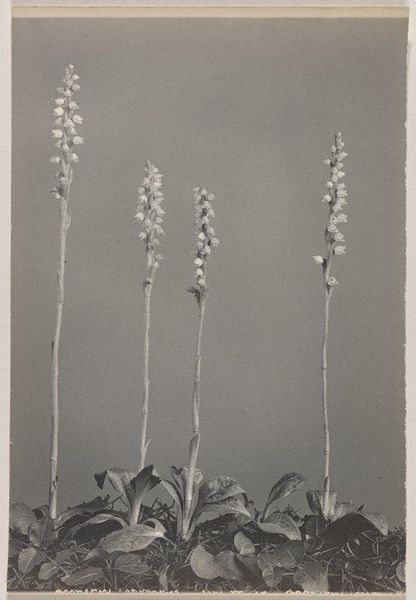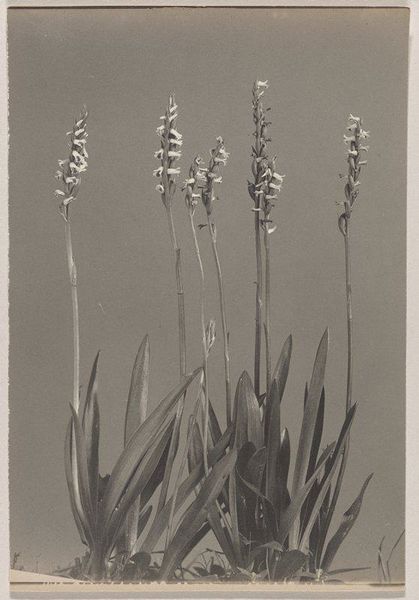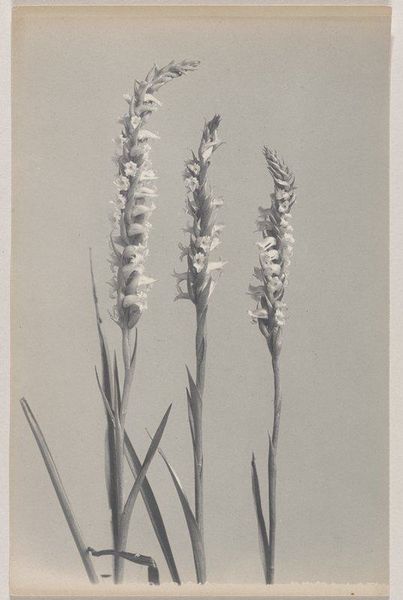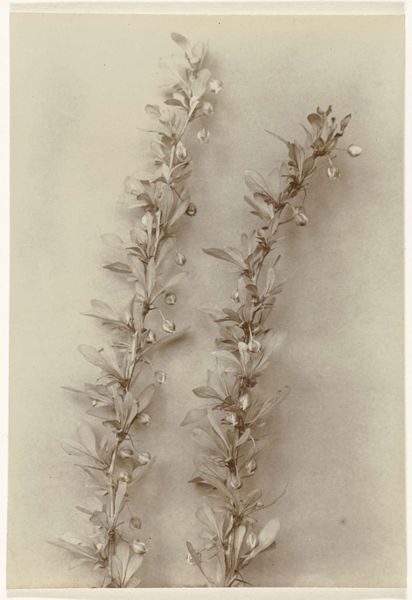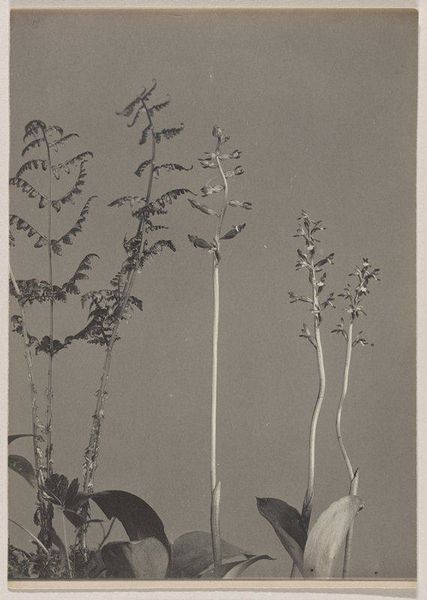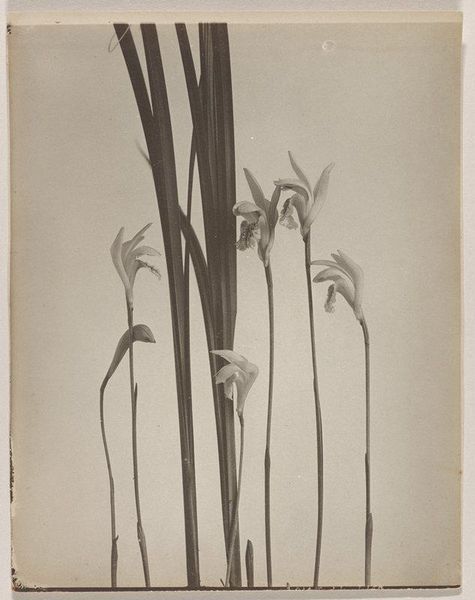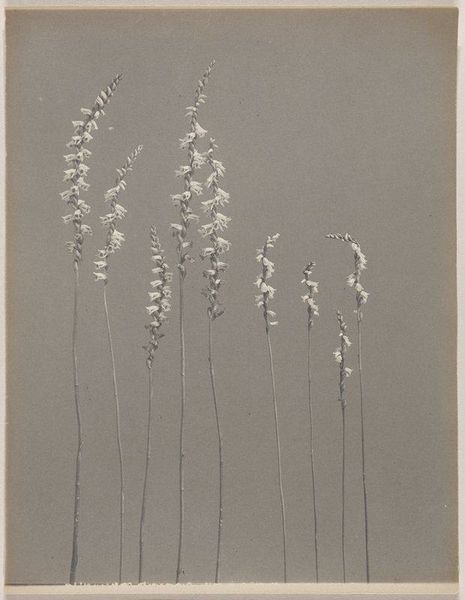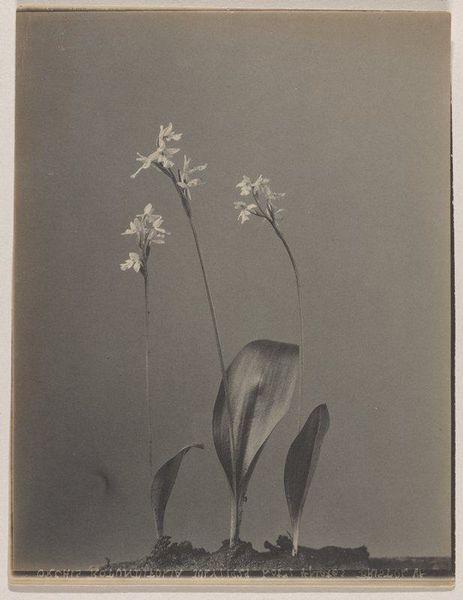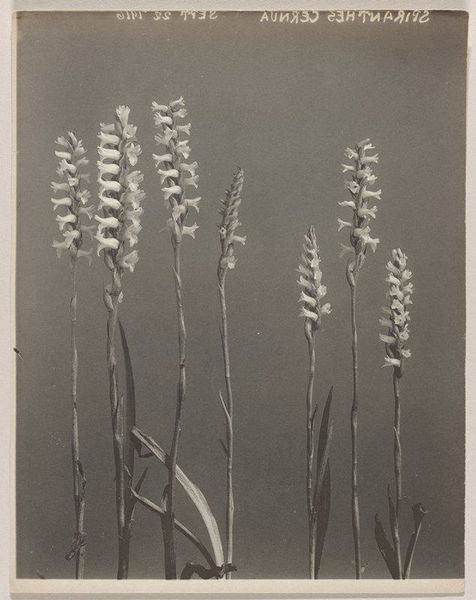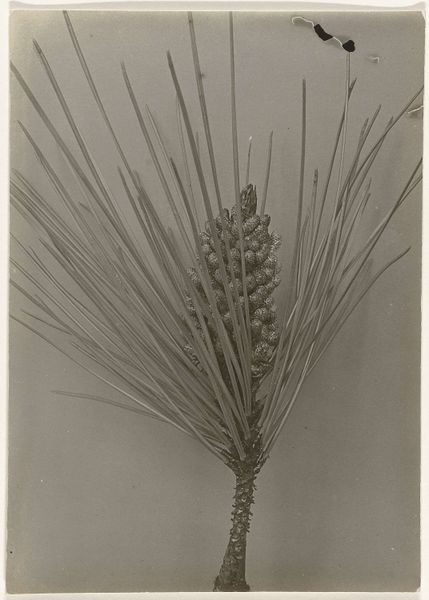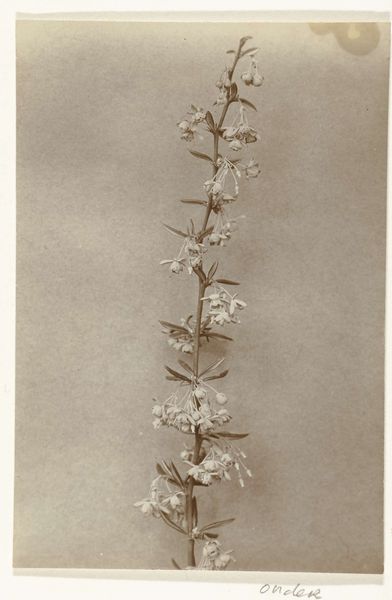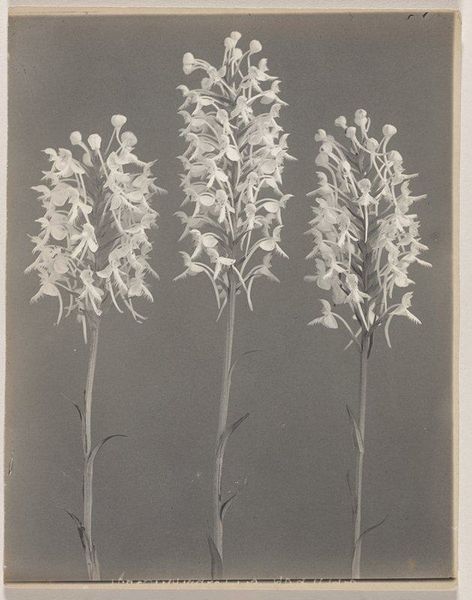
photography
#
organic
#
photography
#
linocut print
#
organic pattern
#
botanical art
Dimensions: height 226 mm, width 149 mm
Copyright: Rijks Museum: Open Domain
Editor: Here we have Richard Tepe's "Haver aar in bloei," a photograph, placing us somewhere between 1900 and 1930. It has this incredible stillness to it; almost a quiet monumentality for something as simple as a flowering oat stalk. What strikes you when you look at it? Curator: What I find compelling is its deliberate attempt to elevate the ordinary. We often think of photography from this period in relation to documenting grand events, shaping public opinion, or in the service of science. However, here Tepe takes this incredibly democratic medium, capable of mass production, and focuses our attention on a single stalk of oats. What does this act of aestheticising the mundane say about the changing social and cultural values of the time? Is it perhaps an assertion of beauty and value found in everyday life, a quiet rebellion against the rapid industrialization? Editor: That’s interesting, framing it within the social landscape. I hadn't thought about it as potentially subversive. Curator: It also forces us to consider the role of the museum. Why display something so…common? How does framing it within the institution change its reception? Editor: So it's not just about the plant itself, but what the image represents being displayed in a museum? Curator: Precisely! The placement within a museum bestows a certain significance. It transforms the photograph from a simple representation to a commentary on art, value, and the politics of display. Tepe, by choosing such a humble subject, is essentially asking us: what *deserves* our attention, and who gets to decide? Editor: I'm now viewing this stalk of oats with totally different eyes. I assumed its appeal was purely aesthetic. Curator: And that aesthetic appeal shouldn't be discounted! However, seeing art as entangled with broader social, economic, and institutional structures helps to deepen our understanding of its purpose and potential impact. Editor: I completely agree. It’s fascinating to consider how a simple photograph can reflect larger societal shifts and challenge the established norms of the art world. Thanks, that really broadened my view!
Comments
No comments
Be the first to comment and join the conversation on the ultimate creative platform.
